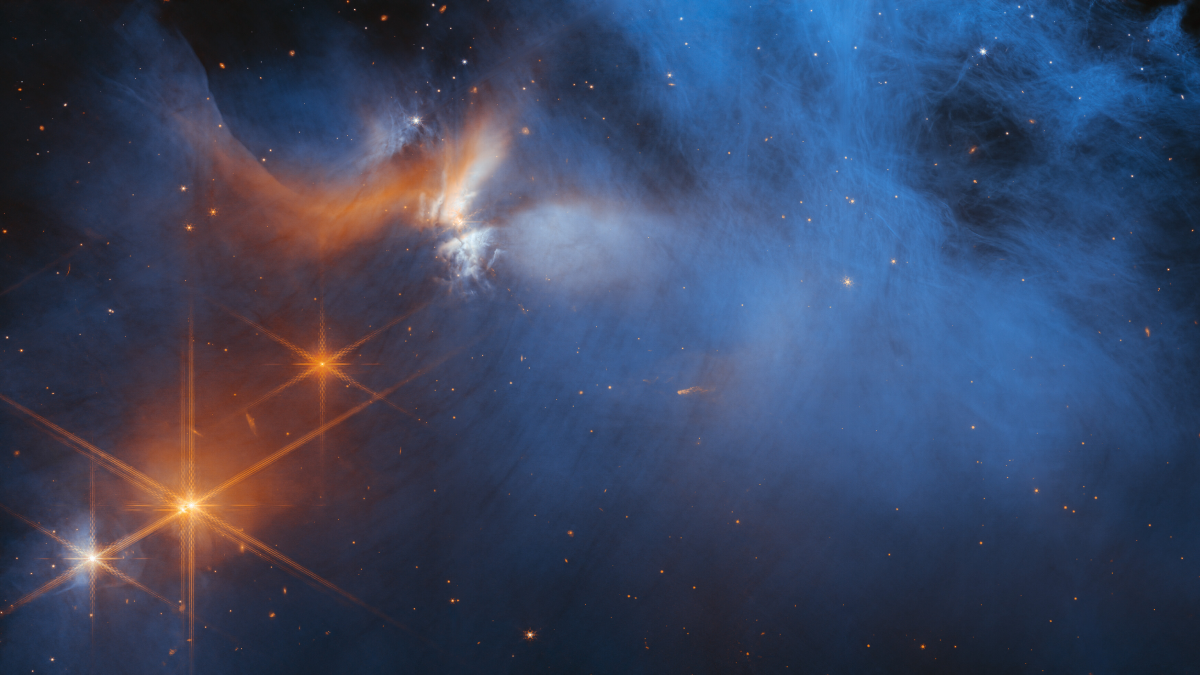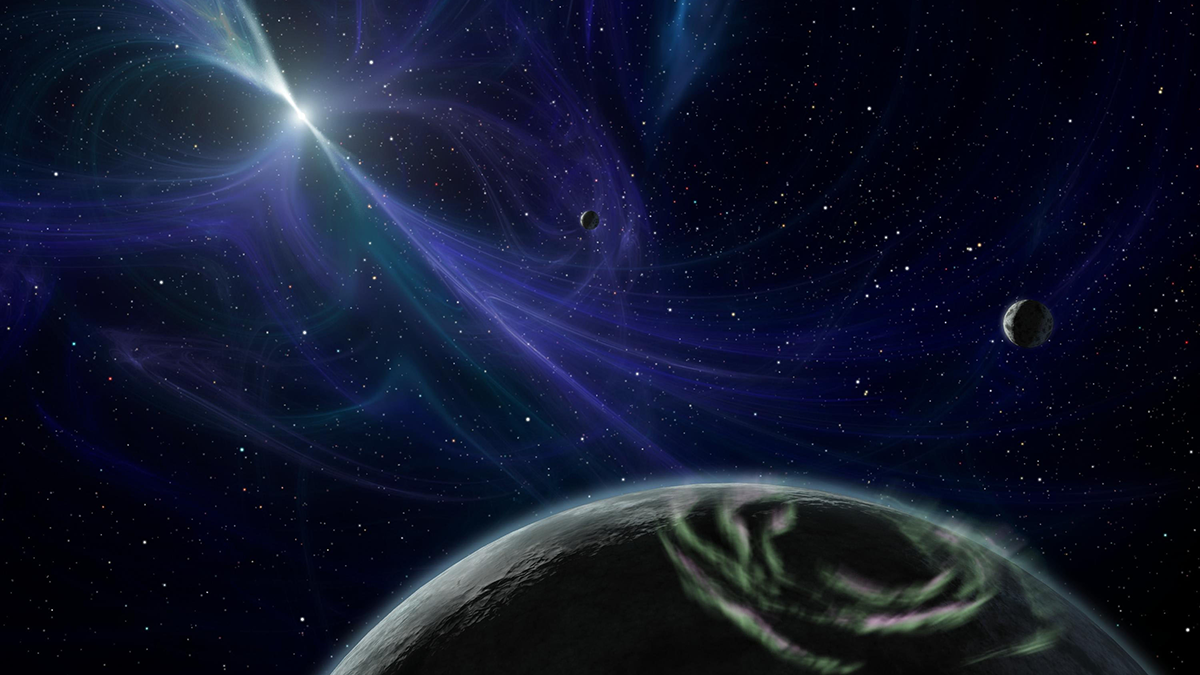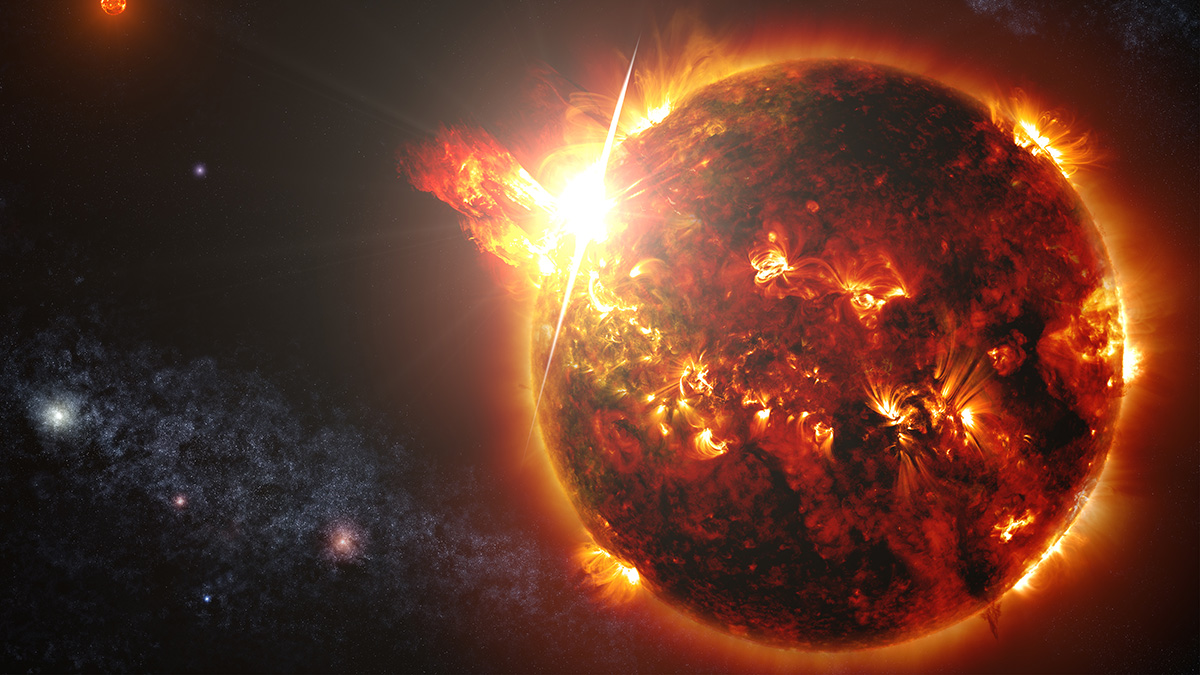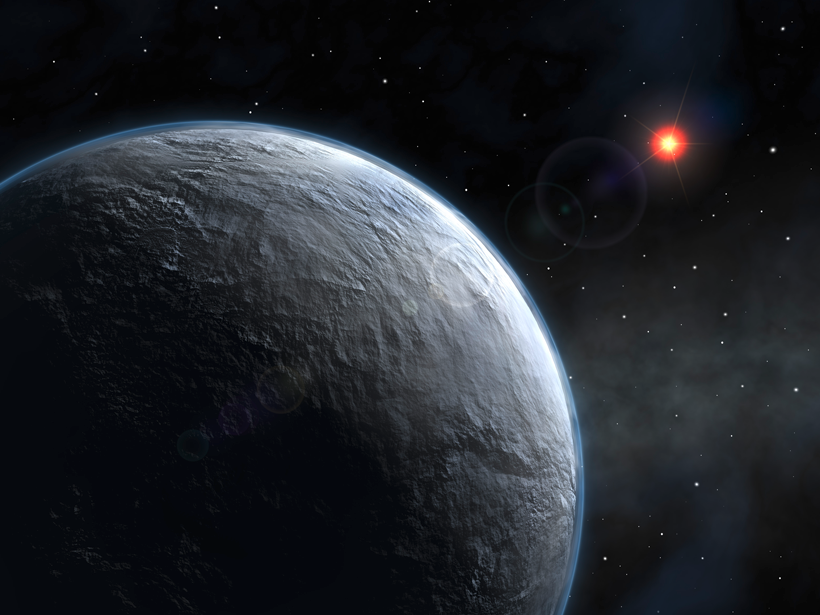Lumps of dust are spiraling around a young star 5,000 light-years away. They could be Jupiter-like planets in the making.
stars
Rocky Exoplanet May Have Magnetic Field
Magnetic interactions between stellar wind and the planet likely caused extrasolar space weather.
Exoplanets May Support Life in the Terminator Zone
A new study finds that the intersection between a searing dayside and a freezing nightside could be habitable.
Complex Organic Ices Discovered in a Star-Forming Cloud
The presence of complex organic molecules such as methanol, ethanol, and acetaldehyde in a molecular cloud suggests that these and simpler ices might be available to planetary systems right from the start.
“Hot Jupiter” Is in a Possible Death Spiral
Kepler’s first exoplanet is migrating toward its star, an evolved subgiant that is much bigger than first thought.
Massive Stars May Commit Grand Theft Planet
New simulations show that planets around young, massive stars may have been captured or stolen rather than homegrown.
Shake, Rattle, and Probe
Helioseismology allows scientists to study the interior of the Sun, solve some basic physics mysteries, and forecast space weather.
Pulsar Planets Are Exceedingly Rare
A new survey of hundreds of pulsars could help solve the mystery of why planets exist around these dead stars.
Coronal Dimmings Shine Light on Stellar CMEs
Coronal mass ejections from stars have eluded easy observation, so scientists are looking at what’s left behind.
Exoplanets in the Shadows
The bright clutter of individual discoveries can overshadow some fascinating research, from necroplanetology to rogue planets to the intimacy of alphanumeric nomenclature.










